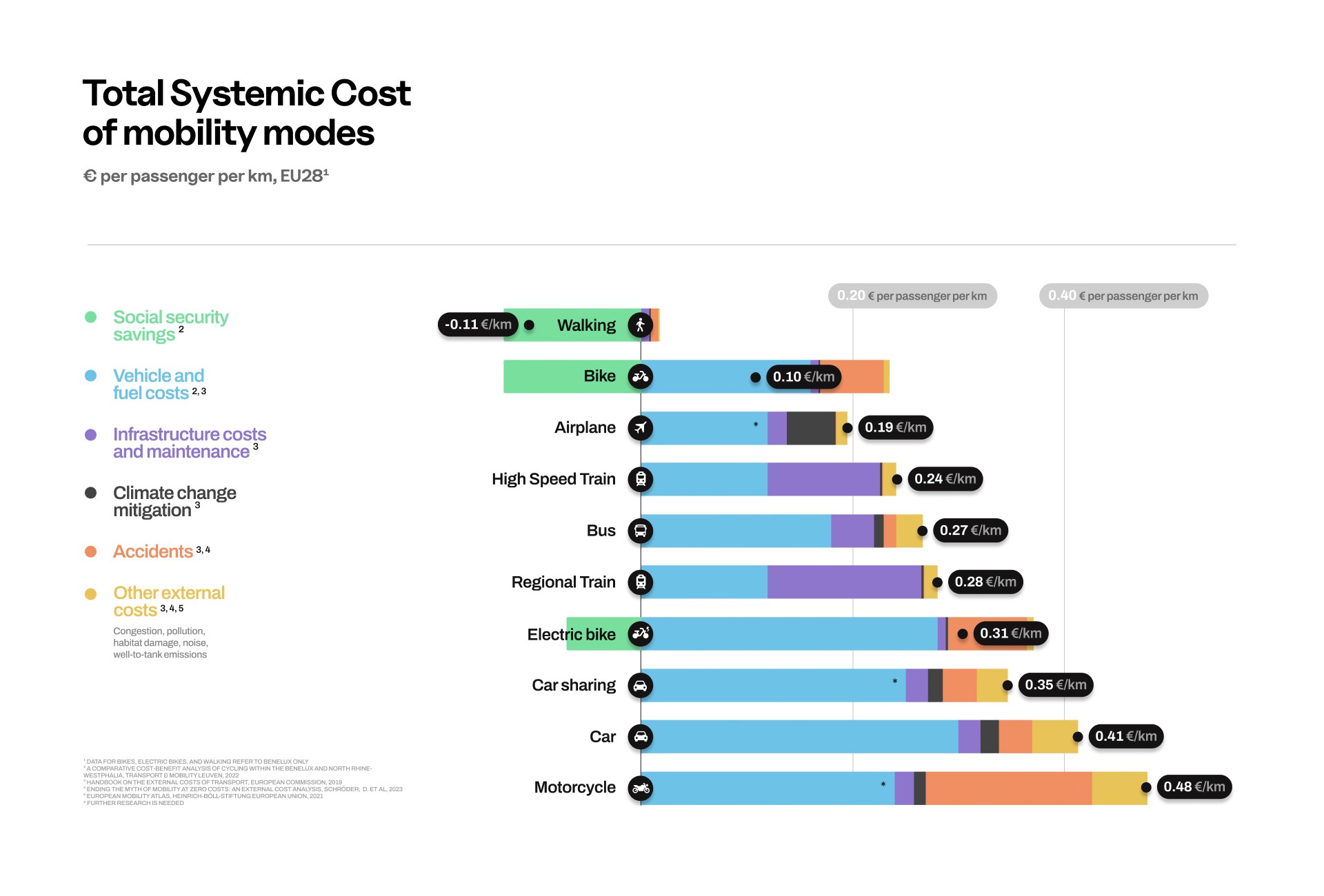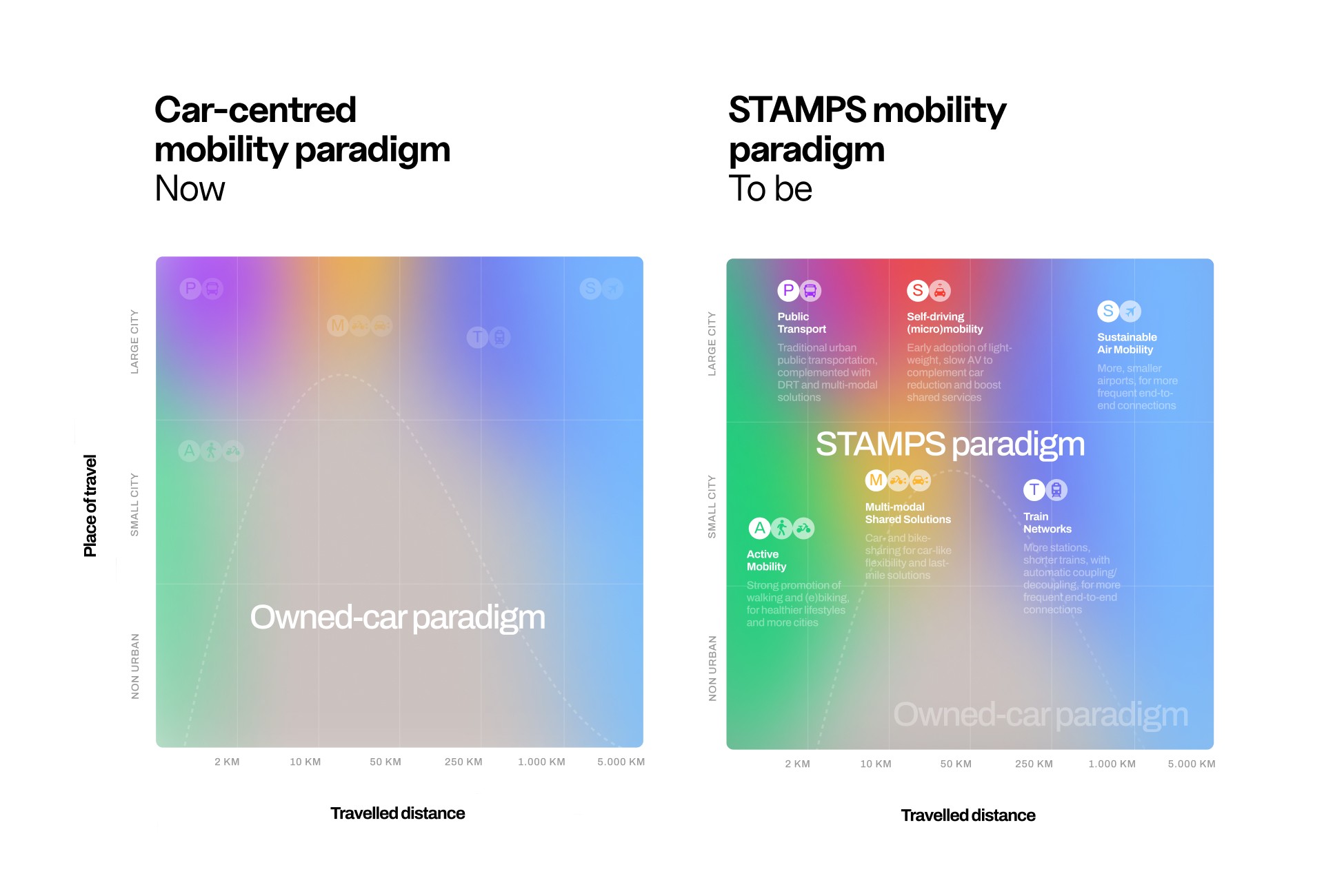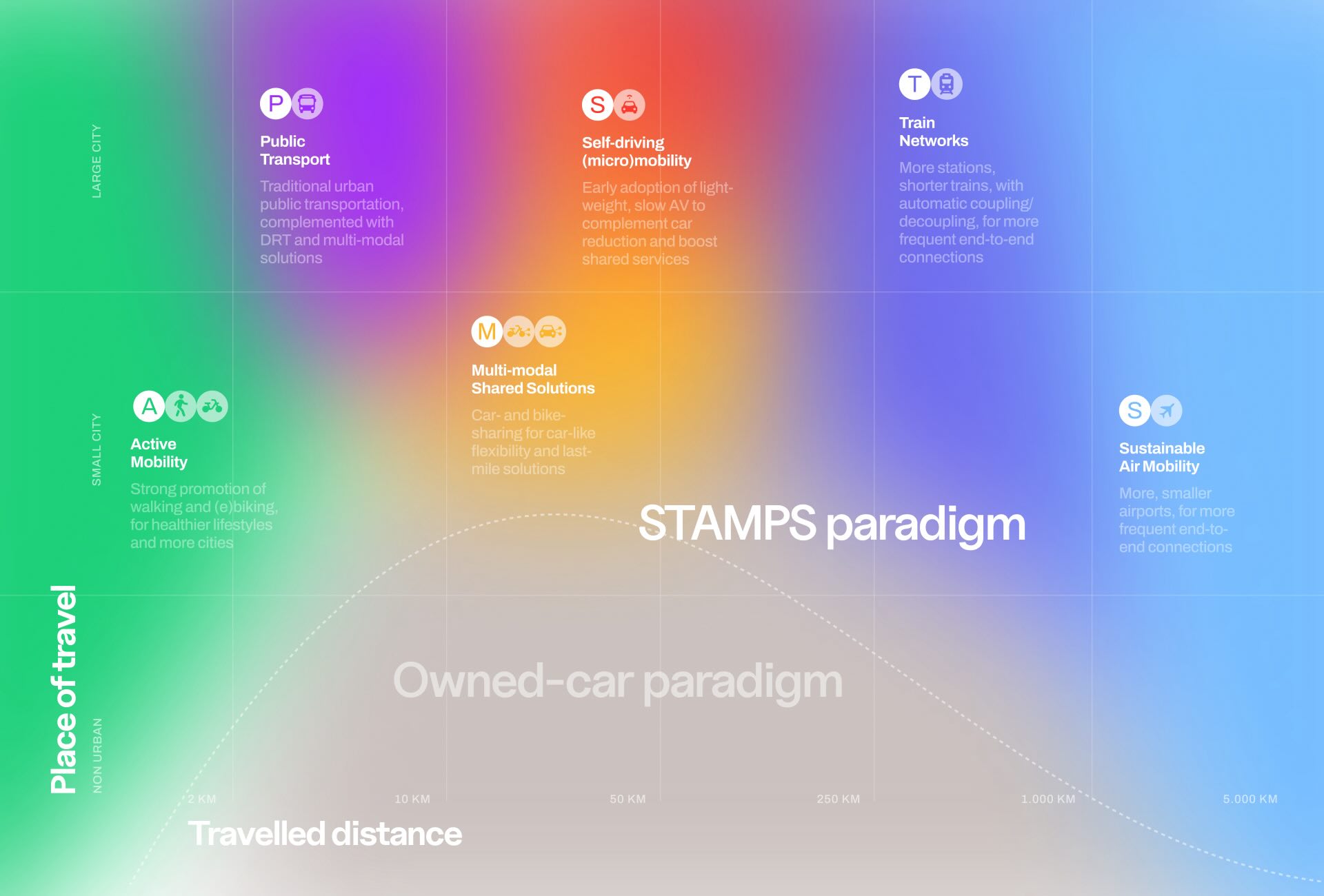From our comparative analysis, a number of misconceptions came to the surface, which found a more calibrated balance once put into the context of a larger systemic analysis. A strong focus is often put, for example, on carbon emissions — under that specific lens, railways seem to fare exceptionally well, while cars and air travel come across as devilish. Yet, shifting our attention to infrastructure costs reveals railways as surprisingly expensive compared to air transportation. After all, travelling through air does not require bridges nor tunnels.
Road accidents, beyond the tragic human toll on victims and their families, impose a massive financial burden of about 0.03 €/km (and a staggering 0.15 €/km for motorcycles) — about twice the climate costs of cars, and comparable to the climate costs of air mobility. Flights, once again, win an edge against surface mobility, thanks to their outstanding safety records.
Moving to energy consumption and vehicle amortisation, shared mobility options — trains, public transport, and flights — seem to fare better than individually-owned solutions like cars and bikes, thanks to better asset utilisation, cheaper fuels, and economies of scale.
Lastly, active mobility — (electric) bikes and walking — is not only associated with little infrastructure and low external costs, but also with lower healthcare bills, with savings ranging from 0.07 to 0.13 €/km, effectively turning walking into a societal net-positive activity. All this without accounting for higher productivity and qualitative well-being.
A second part of our analysis brought us to evaluate the evolution of different transport modes over time. We looked into which modes are dominant in the urban and extraurban environment, and which modes allow for short, medium, and long distances. We came up with the Mobility Map, a matrix model that visually summarises mobility shifts, and eases the identification of high-level mobility paradigms.
First we populated the Mobility Map with the current mobility paradigm. It became soon clear that absolute dominance of car mobility in many western countries. Indeed, private cars represent one of the greatest commercial hits of the past century: they have shaped our cities and living habits, and claimed over 80% of inland km travelled in Europe and many other geographies.
Considering the urgent macro-challenges we are facing today — urbanisation, city densification, carbon taxes, electrification, and autonomous technologies —, we then realised the opportunity (and the urgency) to ideate, visualise, and map new paradigms, emerging from the interplay of complex multi-modal solutions. From there, we then worked on forecasting a snapshot of a mobility paradigm for the year 2035, and landed on a "STAMPS" paradigm.
— Sustainable Air Mobility (S): sustainably-fuelled aviation could expand the airport network, with smaller airports servicing smaller (but growing) cities (not flying cars, but “flying busses” maybe?).
— Train Networks (T): smaller, autonomous trains, (virtually) coupling/decoupling, could connect a larger network of mini train stations with frequent, end-to-end connections.
— Active Mobility (A): urban policies could transform cities worldwide towards denser, greener, quieter living experiences, turning large stretches of concrete into bike lanes, canals, and public spaces.
— Multi-modal Shared Solutions (M): an extended rail network could be complemented by on-demand last-mile solutions like car and bike sharing, digitally and physically integrated into train-turned-multimodal stations.
— Public Transport (P): existing urban public transport may cede ground to the train (T) + last mile (M) combo, enhanced by DRT solutions and autonomous technologies.
— Self-driving (micro)mobility (S): (light-weight, slow) autonomous vehicles may accelerate the transition towards on-demand car-hailing before a full transition to privately-owned EVs, “flattening the curve” of EV infrastructures.
Going beyond cars will require designing and comparing new multi-modal, complex paradigms. Shifting focus from transport technologies to mobility paradigms, and from granular cost analyses to systemic cost analyses, may help tackle current challenges and megatrends in an integrated way, ultimately increasing public utility, sustainability, and accessibility.





